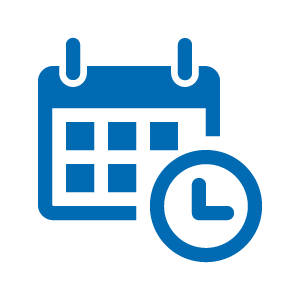Breast lumps
Breasts consist of glandular tissue, lactiferous ducts (milk ducts), fatty tissue, and connective tissue. Most breast complaints are benign and often due to hormonal regulation.
Symptoms
In some people, the breast itself may feel quite tight, uneven and sore on the sides. Breast symptoms vary according to the stage of the menstrual cycle and are most noticeable before menstruation. The occurrence of these kinds of changes is commonly referred to as “mastopathy”.
Up to 10% of women may have lumps in their breasts at some point. Smooth lumps that are mobile are indicative of benign changes. If there’s soreness and a lumpy region in the breast before menstruation, you should re-examine your breasts after you have menstruated.
Many breast cancers are found examining a lesion a woman has felt herself in her breast. The incidence of malignant tumours clearly increases after the age of 40. A typical finding indicative of breast cancer is a solid, painless breast lump attached to its surroundings. The skin may be retracted at the site of the lump, or the nipple may have turned inwards (nipple inversion).
Breast examinations
The best time to examine the breasts is within about a week after menstruation, when the pain and swelling caused by hormones is least. A video is available for the self-examination of breasts.
If you detect any breast lesions, contact a healthcare professional for a more thorough examination. Standard examinations include clinical examination of the breast by palpation, ultrasound, and mammography. The mammography findings may be supplemented using ultrasound and sometimes magnetic resonance imaging (MRI). If necessary, a core needle biopsy will be taken of the lesion to determine the diagnosis.
Benign causes of breast lumps
Breast tissue may be found outside the actual breast. The occurrence of extra nipples or extra breast tissue in the armpit area is fairly common.
About a third of women have so-called fibrocystic changes in their breasts (mastopathy). These changes involve fluid-filled blisters and cysts formed in the milk ducts and an increase of connective tissue. Cysts are usually a couple of millimetres in diameter but in one in three women they may measure 2 to 3 centimetres and cause pain. Their size may vary during the menstrual cycle. Cysts are clearly visible in an ultrasound examination. Large and sore cysts can be emptied by puncturing them and then “filled” with air to prevent regrowth.
Fibroadenomas can be found in some 5% to 10% of women, mostly among young women. Typically, they are benign lumps that are painless, regular in size, and mobile in relation to their surroundings. They don’t vary in size during the menstrual cycle. In mammography, these lesions are clearly defined and rather dense. If the fibroadenoma diagnosis has been confirmed with a core needle biopsy and the fibroadenomas show no sign of growing or don’t cause much pain, they don’t require surgery.
There can also be fatty lumps (lipomas) in the breasts. These are soft, painless and quite mobile.
When should you seek treatment?
If you detect a breast lump or other lesion that you can clearly feel, you should see a doctor. Further examinations are also required if you experience breast discharge, particularly if it’s bloody or one-sided. Nipple inversion within a short period of time and clear skin changes of the breast or the areola also require examinations.
Information sources: The Finnish Medical Society Duodecim: Terveysportti, Lääkärin tietokanta database
FSHS General Practitioner / 15 June 2023
Service options

